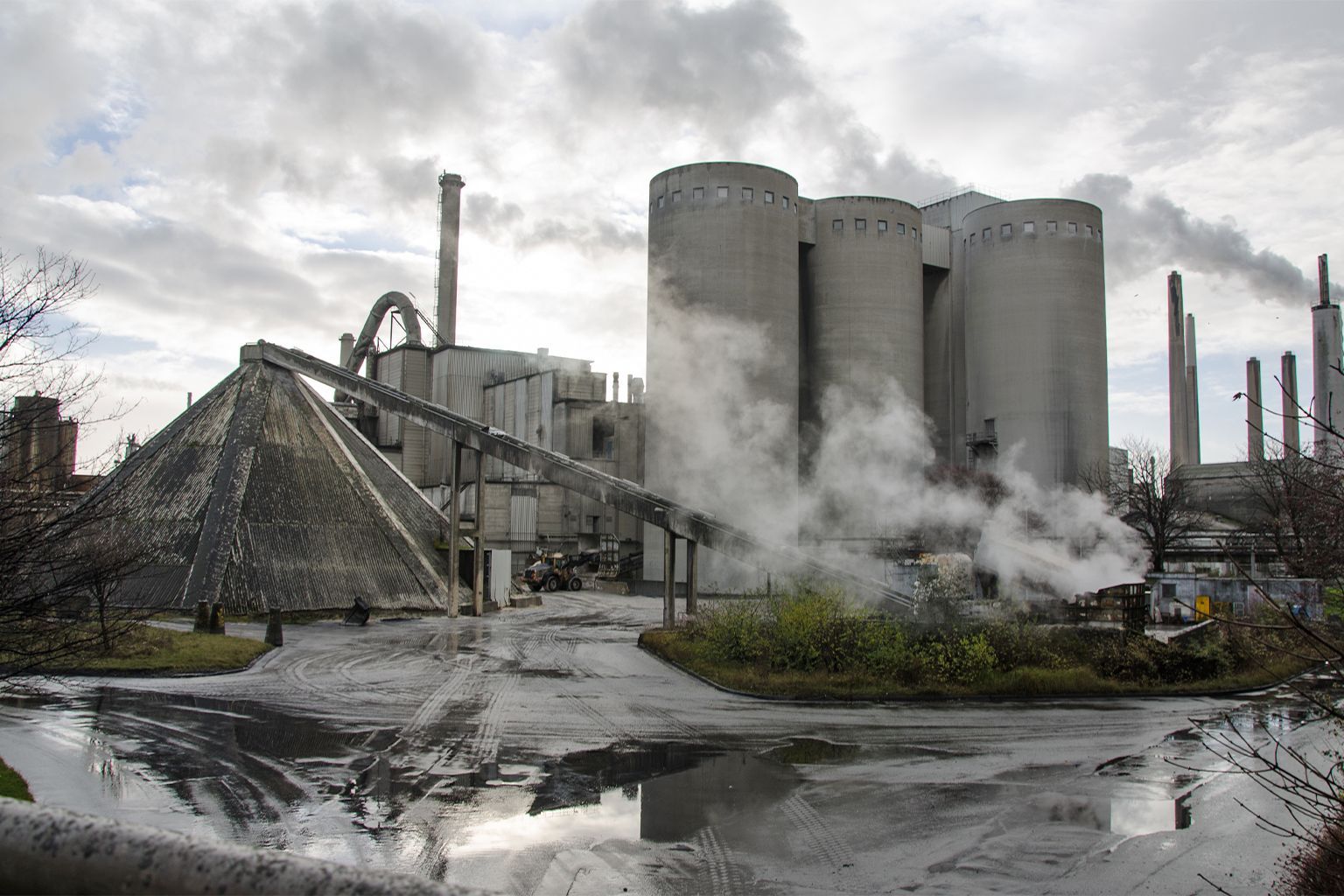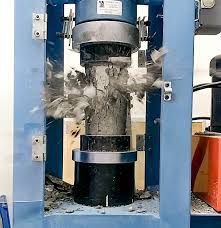By site-4jvpyA
•
May 13, 2024
Environmental impacts of cement and concrete Principal among concrete’s impacts is its “ colossal ” contribution to climate change-causing emissions, say experts. Most of this huge carbon release is attributable to the manufacture of cement, a binding agent made by super heating and chemically altering limestone and clay. Cement is an essential ingredient in concrete, which is a mix of this binding agent, plus water, sand, gravel and stone aggregate). Manufacturing Portland Cement, the most common form used today, requires heating immense kilns, usually stoked with coal and coke, to above 1,400° Celsius (2,552° Fahrenheit), energy consumption that accounts for 40% of cement’s carbon footprint. However, the thermochemical process that decomposes limestone to create clinker — a core component of cement — emits the majority of emissions; it is a process that cannot be avoided. Other climate change-fuelling and potentially harmful pollutants released during production include nitrogen oxide, sulphur dioxide, and carbon monoxide, all of which have major impacts on public health. A 2023 study found that carbon emissions from cement production in developing countries (even excluding China) could reach 3.8 gigatons by 2050, compared to around 0.7Gt in 2018. This tremendous surge in greenhouse gases alone could consume a massive amount of humanity’s remaining carbon budget to keep the world within 2° C (3.6° F) of warming; a planetary boundary which if crossed will have grave global consequences , says study co-author Dabo Guan, professor in climate change economics and the low carbon transition at the University College London. Health concerns While scientists warn urgently about cement and concrete’s climate footprint, they also note other important localized concerns. Poorly regulated cement plants contribute significantly to air pollution , emitting a host of harmful pollutants including heavy metals and particulate matter , with production also estimated to contribute to around 10% of global mercury emissions , or 2,200 tons each year. “A lot of focus is on how to mitigate [cement’s] climate change impacts,” says Christopher Oberschelp, senior researcher and lecturer at ETH Zurich. “But we’re forgetting that we’re also having other very big problems in terms of human health” connected to its production. In 2020, scientists estimated that, along with climate impacts, producing concrete causes around 5.2% of particulate emissions smaller than 10 microns and 6.4% of particulate emissions smaller than 2.5 microns; these tiny particles can penetrate deep into the lungs, so are associated with a host of health problems. The researchers calculated that the global climate and health cost of concrete equates to $335 billion per year. That cost will almost certainly rise as new quarries are dug and cement plants are built in the poorly regulated developing world. These health concerns extend from workers’ exposure at mines , quarries and cement plants, and beyond to surrounding communities , says Phoka Rathebe, associate professor of environmental health at the University of Johannesburg. Research by his team linked cement plant workers’ exposure to the development of chronic obstructive pulmonary diseases , while he notes multiple other studies have found a host of respiratory illnesses and a range of health impairments connected to production. Cement plants also raise questions of environmental justice, with research showing they are often disproportionately sited in low income communities of color in the United States for example. A 2019 review paper notes that cement plant pollutants may have a “toxic activity on respiratory airways, reducing the dynamic lung function, increasing the risk of respiratory symptoms and diseases with a possible carcinogenic effect,” though that study also underlined issues with many studies. Another paper , for example, noted that pollution problems may be specific to individual facilities, but not at others, and emphasized that targeted research is needed in developing countries, particular those in Africa where there’s a dearth of information on the industry’s health impacts. Oberschelp says existing technology could reduce air pollution and health impacts by minimizing and capturing pollutants. But the upgrade and modernization of cement plants is lagging, particularly in developing countries. “One good thing about this is that [because these impacts are localized,] local government can have good control over the health impacts,” he adds. “If they set the [precautionary principle inherent in the] boundary framework, then the cement industry can adapt,” curbing health effects. Cleaning up cement and concrete The industry has principally pulled on three levers so far to begin addressing its carbon emissions, says Ian Riley, CEO of the World Cement Association — improving energy efficiency, swapping out coal and other fossil fuels for “less carbon intensive fuels,” and reducing the proportion of cement clinker (a major CO 2 source). Other analysts emphasize a current “boom” in research and innovation to clean up cement, including the exploration of solutions that follow a circular economy model. First off, replacing fossil fuels in the cement making process with alternative fuels could greatly reduce the industry’s carbon footprint. But while projects to electrify cement kilns are underway they’re unlikely to come online at scale for more than a decade, according to a GCCA net-zero roadmap . Another promising solution focuses on making “ low-carbon concrete .” Limestone calcined clay cement, for example, offers a 40% CO 2 reduction over traditional Portland cement and is being considered where calcined clay is available. Utilizing waste materials as fuel or as aggregate ingredients — including fly ash left over from coal production, and blast furnace slag from steel production — could also reduce emissions, as could agricultural waste , say experts. Researchers are also exploring more radical solutions, such as the use of algae to replace quarried limestone . All of these ideas are at varying stages of development and deployment, though some may never fully reach the scale required to fulfill future concrete demand, says Riley. “Even today, nobody has a solution to avoid the emissions [generated by clinker production],” he notes. Riley and others suggest carbon capture and storage, or utilizing waste CO 2 within the production process, could one day offer a clinker carbon solution. Sucking up the carbon produced during the cement making process and then storing it in newly made concrete is envisaged as the ideal solution. Some companies are already applying this method. Canada-based CarbonCure , for instance, injects captured CO 2 into concrete where it mineralizes and becomes trapped. “Zero carbon cement and concrete will absolutely require CO 2 utilization technologies like ours,” says company CEO Robert Niven, though he adds that this is just one part of a package of solutions needed, which includes such innovations as ramping up the use of recycled concrete aggregate. Carbon capture has great potential to reduce cement’s footprint, according to Alastair Marsh, a research fellow in alkali-activated materials at the University of Leeds, but he adds that the “proof is in the pudding in terms of how quickly, effectively and at what cost [the technology] can be scaled up.” Other experts warn that the cost and energy required to install next generation cement technology, particularly in developing countries where demand will be highest, may be out of reach for many economies. “The hope is that the technology [including carbon capture and electrification] will remove all emissions from cement production. However, that technology sounds good and sounds optimistic, but we don’t have it yet,” says Mohammad Ali, with the Institute for Manufacturing at the University of Cambridge. However, he adds, “There are solutions that can be implemented almost straight away, alongside the development of technology.” Given that the majority of future carbon emissions from cement and concrete are expected to come from developing countries, Gabo expresses the urgent need for developed nations to invest in solutions which rapidly cut their own emissions, while also supporting developing countries with capacity building and technological advancements. “We need to have those alternatives cements and other technologies spill over as quickly as possible to the Global South,” Gabo says, so that living standards can improve there, while keeping the emission curve flat.











